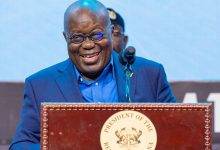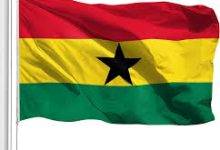Bawku has been in the news since November 2021 and the events have continued to take violent and unpredictable twist and turns in the past few weeks. Many Ghanaians, sadly including some individual state, government and opposition functionaries have literally ignored the violence as taking place somewhere far away in the north or shied away from publicly commenting on the issue because it is “too sensitive” or “too complicated”. Some media houses and personnel have largely been cowered and intimidated by parties in the conflict from doing objective journalistic work to educate Ghanaians on the issue. So-called security experts who know little to nothing about the geography, demography and history of Bawku line up on national TV stations to propagate misinformation and offer lame academic opinions.
CHIEFTAINCY THE MAIN ISSUE
First of all, the conflict is supposed to be between Kusasis and Mamprusis (two different ethnic groups) over Bawku chieftaincy. It is not a fight between two rival royal gates. Bawku is NOT Dagbong. Mamprusis from the North East Region claim to be the rightful rulers of Bawku because their forefathers were enskinned as Bawku Nabas by the chief of Nalerigu or Nayiri during colonial times. Kusasis counter-claim that Bawku is their traditional territory and that Mamprusi chiefs were imposed on them during colonial rule in 1932.
When the conflict first erupted in the 50s, the colonial government set up a Committee of Inquiry to investigate. The three-member committee, made up of S. D. Opoku-Afari (Chairman), Nana Yaw Agyeman Badu I – Dormaa Hene (Member) and Lure Kanton III – Tumu Koro (Member). After visiting the area and extensively interviewing key figures from both sides, the committee recommended thus:
“The Committee is satisfied that the old method of appointing a chief to go to Bawku and rule the Kusasi is greatly resented by the Kusasis. We felt that it is undemocratic as it is dictatorial for the Nayiri who claims to be the nominal owner of the land to send one of his Mamprusi subject to rule the Kusasis as their chief. We feel that the Kusasis would evolve politically and socially as well as economically better under their own chief than under an imported chief whom they resent.”
The government of the day issued a whitepaper declaring Kusasis owners of Bawku and the first Kusasi Bawku Naba, Abugrago Asigri Azoka I, elected by the Kusasis, as the rightful chief. The Mamprusis contested the findings in the Appeals Court, which ruled in 1958 that Bawku belonged to Kusasis and that Abugrago Asigri Azoka I was the rightful Bawku Naba.
MILITARY MEDDLING
Azoka I ruled from 1956 to 1966 when the Military Junta passed a Chieftaincy Amendment Decree, NLCD 112, destooling and deskinning all chiefs deemed sympathetic to the CPP government. Bawku chieftaincy was thus handed back to the Mamprusis. The Kusasis pursued the case under the Acheampong regime in 1972 and in response the Secretary to the Supreme Military Council, G. B. Boahene declared:
“My investigations into your allegations have revealed that the area in question is called Bawku District Council and not Mamprusi District Council. This alone is evidence that the area belongs to the Kusasis. Be that as it may, you might have realised that for some time now, there has been so complete a fusion of the tribes in the area that it is difficult to distinguish between Mamprusis and Kusasis. It is observed that, very few of the 18 Canton Chiefs in the district are Mamprusis. And once nearly all the 18 Canton Chiefs are Kusasis and have been properly enskinned, it is the desire of this Office to let sleeping dogs lie.”
It is significant to note that the status of Bawku as Kusasi traditional land is again affirmed. The only reason or excuse for the military authorities not to act at the time was “the complete fusion of the tribes” and the fact that “nearly all the 18 Canton chiefs are Kusasis”. Both conclusions are factually correct, except that even though the Mamprusi settlers in Bawku have inter-married with Kusasis, Moshies, Bisas, Hausas etc over the generations and few today barely speak Mampuli, they insist on their Mamprusi ancestry and continue to claim to be Mamprusis.
The attitude of successive military governments was the same: “let sleeping dogs lie”. But the Kusasis would not let sleeping dogs lie and eventually got a positive hearing during the Jerry John Rawlings PNDC regime in 1983 with the passage of PNDCL 75 reversing NLCD 112 and reinstating the status quo of 1957/58. The same decree posthumously deskinned the Mamprusi Bawku Naba, Adam Azangbeo who died in 1981, posthumously restored the late Kusasi Bawku Naba, Abugrago Azoka I who passed away in 1983 to the status of Bawku Naba, and installed his son, Abugrago Asigri Azoka II as Bawku Naba in April 1984.
A SUPREME COURT RULING ON BAWKU
In April 2003, the Mamprusis, led by Alhaji Ibrahim Adam Zangbeo filed a case in the Supreme Court against Abugrago Asigri Azoka II, challenging the legitimacy of the latter as Bawku Naba. In the course of the case the Mamprusis realized their claim had no legal merit and applied to the court to discontinue the case resulting in the following ruling on April 29th, 2003:
The application to discontinue is granted but without liberty to apply under PNDCL 75 and articles 270 and 277 of the 1992 constitution. Costs of 10,000,000.00 to the plaintiff.
This ruling was signed by Supreme Court Justices G. K. Acquah, T. K. Adzoe, S. A. Brobbey, S. G. Baddoo and DR. S. Twum. The ruling meant that Azoka II’s position as Bawku Naba remained unchallenged and unchallengeable and he has been the gazetted Bawku Naba for the past thirty-nine years. Despite the Supreme Court ruling, the Mamprusis refused to recognize Azoka II, and in late 2021 decided to perform the funeral of Adam Azangbeo who died way back in 1981, to pave the way for the enskinment of a Mamprusi Bawku Naba by the Nayiri. This was clearly a provocation of the Kusasis and a test to the government.
To be continued
BY REVEREND PROFESSOR JOHN AZUMAH



